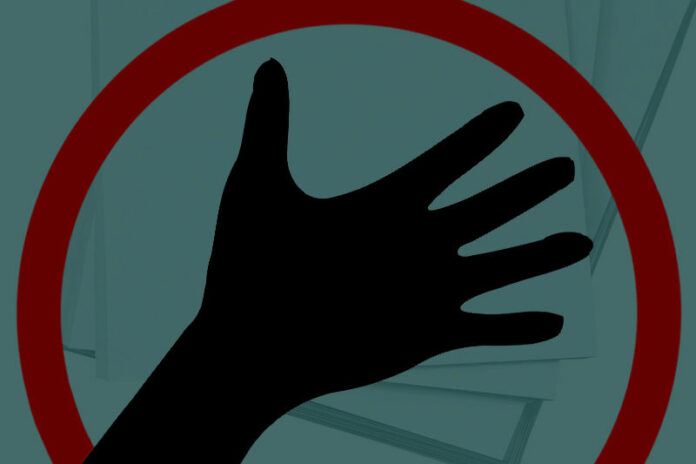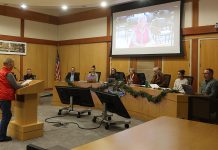Back in August 2019, Palm Drive Health Care District board member Richard Power asked the board to get a legal opinion on the question of whether parcel tax funds from Measure W, the initiative to support Palm Drive Hospital, could be used for other health-related programs.
Power was concerned that the district could open itself up to a lawsuit alleging misuse of taxpayer money, if it was found to be operating outside of the scope of Measure W.
The board put out an RFP and, in November, chose the San Francisco law firm, Hanson Bridgett, to prepare the opinion. Originally due at the beginning of December, the much-anticipated report was delivered at the beginning of January.
Unfortunately, the public won’t be seeing that report any time soon.
At its January board meeting, the health care district’s attorney, William Arnone, announced that the board would not be releasing the Hanson Bridgett report to the public, claiming attorney-client privilege. Instead, he said the board would ask Hanson Bridgett to write a second report for public consumption.
“The board gave direction to staff during closed session to request from the attorneys who were selected in the RFP process to prepare a version of their memorandum that does not contain confidential attorney client privilege and outline for the public the contents of the parameters applicable to what the district can do,” said Arnone. “They directed staff to make that request to Hanson Bridgett post-haste so they will prepare an alternative memorandum that can be released to the public.”
Power requested that the expurgated report be made available to the public by the next board meeting on Feb. 3.
Response from the district’s antagonists was quick. Former board member Jim Horn had already filed a California Public Records Request for the Hanson Bridgett opinion (as has this newspaper and the Press Democrat). Amid jokes about the “William Barr version,” Horn took the board to task for going about business as usual, while not releasing the full report.
“Until the board releases the full text of the legal opinion on Measure W, I don’t know how you can talk about future committee meetings, town hall meetings or anything else,” he said. “I think you need to release that opinion so the public can see that, and we can discuss with you what the options are for this hospital district going forward. Right now many of us feel that there is no voter-approved source of funding for this district anymore. So how you think that you’re ready to do budgets and make plans for the future is beyond me until that’s resolved.”
Gayle Bergmann, who, along with Horn, has initiated a petition to dissolve the health care district, was even more blunt.
“Release the report to the public,” she said, “After all, we paid for it.”
A humane choice or an $830,000 mistake?
Horn also took issue with the district’s decision to use the $2 million in cash from the sale of the hospital to pay off its bankruptcy debt instead of the general obligation bonds (referred to as GO bonds), arguing that would cost the district an additional $830,000 in interest payments.
“I pulled up the debt schedule for the bankruptcy for the GO bonds. If you applied that $2 million to the GO bonds, you would pay them off in three years, and you would save the taxpayers over $800,000 in interest,” he said.
“As we all know, the bankruptcy debt carries no interest. So you’ve chosen to pay off a debt with no interest rather than one that carries about 5% interest. As a business decision, that sucks, and I don’t see any legal justification that requires it.”
After the meeting, board president Dennis Colthurst said it was his understanding that the district had to pay off the bankruptcy first and, besides that, it was the humane thing to do.
“We are going to take care of our people first,” he said, meaning any former employees of Palm Drive who are still owed money, “and take care of the big creditors later.”
Unfortunately, the Amended Palm Drive Plan for Adjustment of Debts, dated March 15, 2019, seems to call for the payment of the GO Bonds first, though the language is clear as mud:
“Liquidity Event shall refer to a special early distribution pro rata to then unpaid Classes 4, 5A, 5B, and 6 (based on the ratio of total allowed claims in each such class to the total of allowed claims in all such classes) that shall be made if sale of the Hospital to AAMG or otherwise produces a surplus over the amounts, if any, required to pay off the Series 2000 GO Bonds, Series 2005 Revenue Bonds, and Series 2010 COPs upon such sale.”
Board member Randy Coffman took Horn’s assertion seriously enough that he asked Executive Director Alanna Brogan if it was true the board had a choice of who to pay off first.
Brogan dismissed the idea.
“This was negotiated at the bankruptcy court, and that’s what the creditors wanted when we refinanced the bonds,” she said. “Yes, we did put that clause in there in case we could pay off the bonds, but what came out in the bankruptcy plan, and what I’ve gone over with the lawyers several times, is that the liquidity event now surpasses the bonds because it’s not a requirement to pay off the bonds first anymore. Before we refinanced, it was required that we pay off the GO bonds, and we would have done that in that situation.”
“Let me understand this,” Richard Power said. “What I’m hearing you say is that the old bonds had essentially a due-on-sale clause, and the new ones don’t.”
Brogan affirmed that that was the case.
Coffman nonetheless requested a written legal opinion on this point.
Other Palm Drive news
In other news from the meeting, the board decided to take out “tail insurance,” which will insure the district against any future claims made against it. Brogan said the tail insurance is significantly less expensive than their current insurance and will cost only $5,900 a year instead of the $11,000 to $12,000 they are currently paying.
After board member Gail Thomas gave a summary of the work of the Futures Committee, a committee looking into what the district should do now that the hospital has been sold, Brogan announced that the district would be sponsoring four public meetings on the future of the district, starting in February. Dates to be announced soon.









